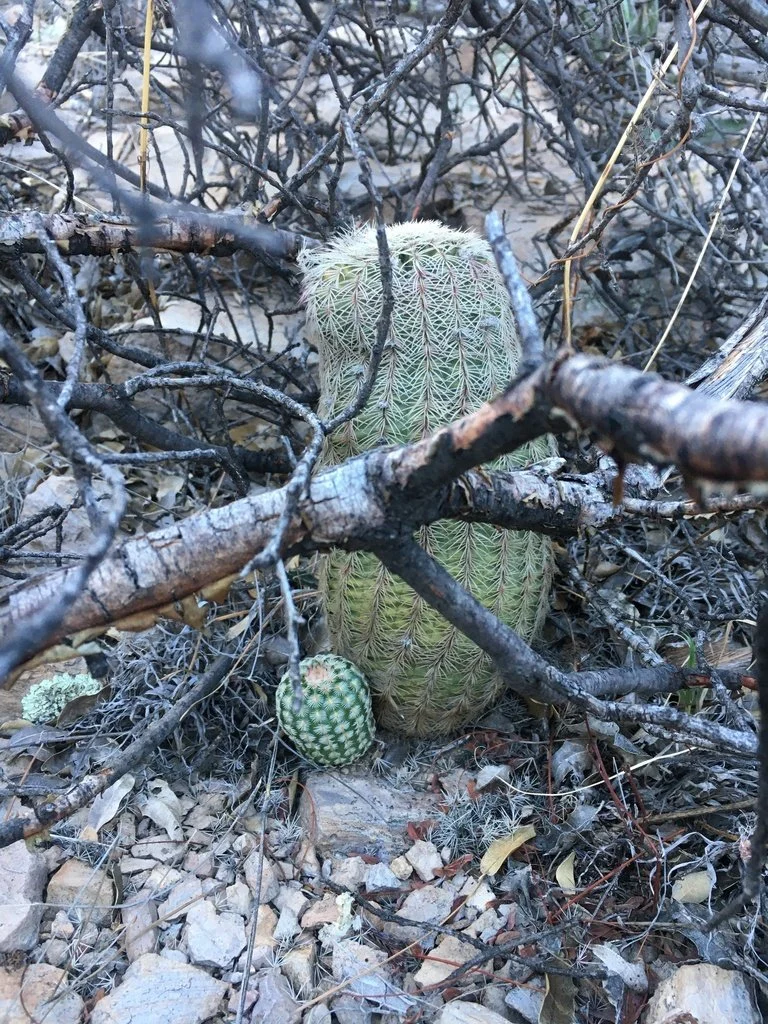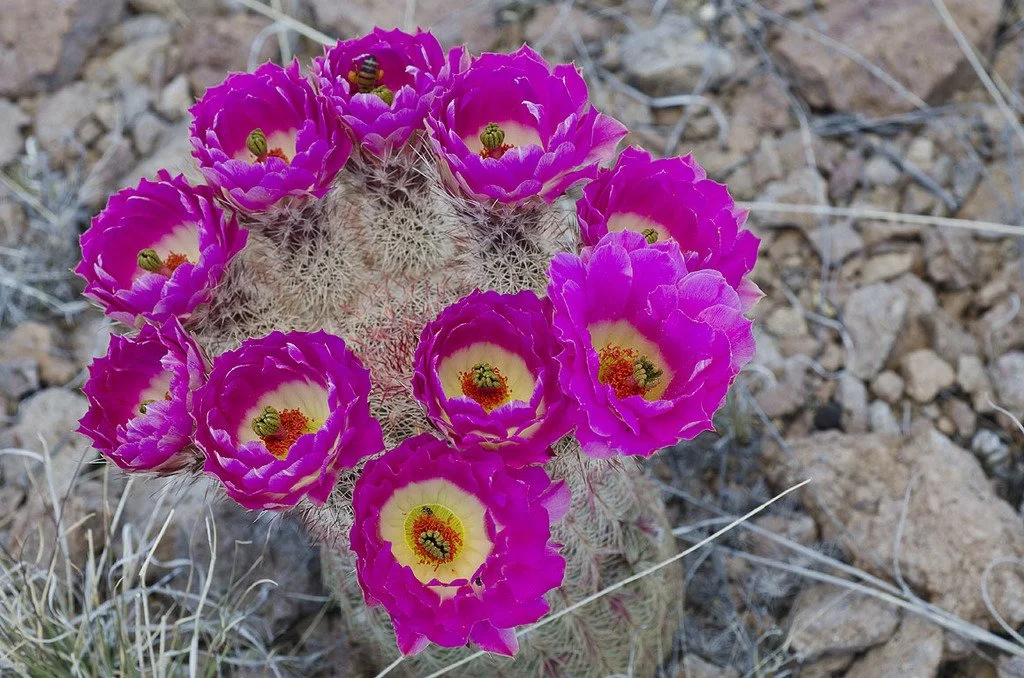Rainbow Hedgehog Cactus
Echinocereus rigidissimus
This is a small hedgehog cactus that rarely gets over a foot tall and the stems are usually solitary (not branching). The spines are flattened against the stems and are white, providing the plant protection from intense sun. The new spines are initially reddish to magenta and fades to a yellow or light pink color when they mature, which lends the plant its name “rainbow cactus”. This plant flowers in flushes throughout the spring season, with multiple buds borne atop the plant from younger areoles on top of the stems. The flowers are bright pink in color with a white colored throat. The flowers are followed by circular shaped, greenish to dark purplish fruit, with white flesh and dark brown to black seeds approximately 3 months after flowering.
Grow in full sun to bright shade. Plants in filtered or morning sun look the best. Excellent drainage is a must. Low water needed though watering plants that are in the ground 2-3 times a month in summer keeps them looking their best. Container plants water once a week in summer. Keep this species on the dry side in winter. If there is absolutely no rain, you can lightly water it, but be careful as this species is prone to rotting, especially in winter. Hardy down to at least 20°F.
Hummingbirds and bees pollinate the flowers, and ants may disperse the tiny seeds.
The raw fruit is used for food.
Photo by Rob Klotz, iNaturalist
Echinocereus rigidissimus on SEINET
Echinocereus is from the Greek echinos, hedgehog or spine and cereus, waxy, while rigidissimus refers to the stiff spines. There are 89 species of Echinocereus native to the southern United States and Mexico in very sunny, rocky places. Usually the flowers are large and the fruit edible.
Found on limestone outcrops, gravelly hills, steep canyon sides, and in grasslands, often in igneous substrates from 4,000-5,500 ft in southern Arizona, southwestern New Mexico; south into central Mexico. This cactus prefers south facing slopes and is rarely seen on flat ground. Their habitat has been negatively affected by cattle, cactus collectors and off road vehicles. These plants are becoming less common in southern Arizona.
This plant gets its common name from all the coloration on the spines. Photo by Cecelia Alexander, iNaturalist
Plants rarely offset or branch. This one has a new growth tip that branched off the base. Photo by Oscar Johnson, iNaturalist
This plant might be missed when its not blooming, but hard to ignore when it is. Photo by Ad Konings, iNaturalist




